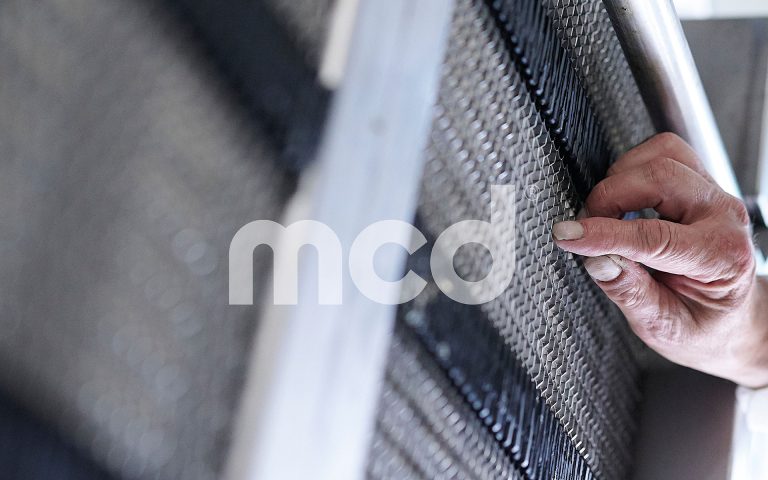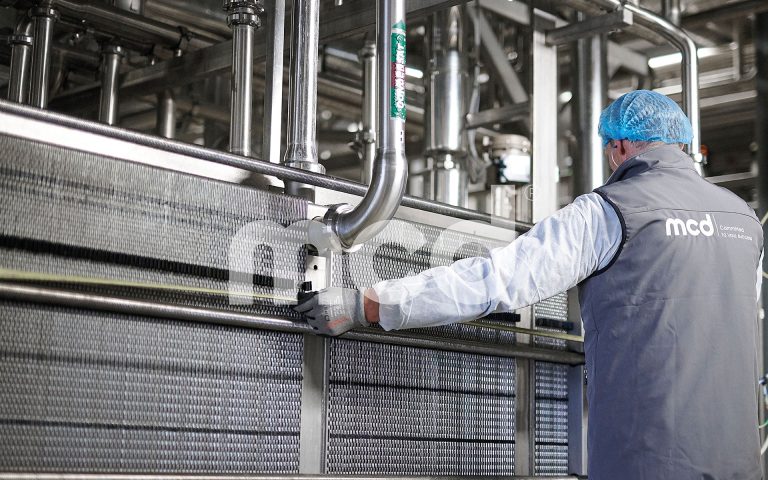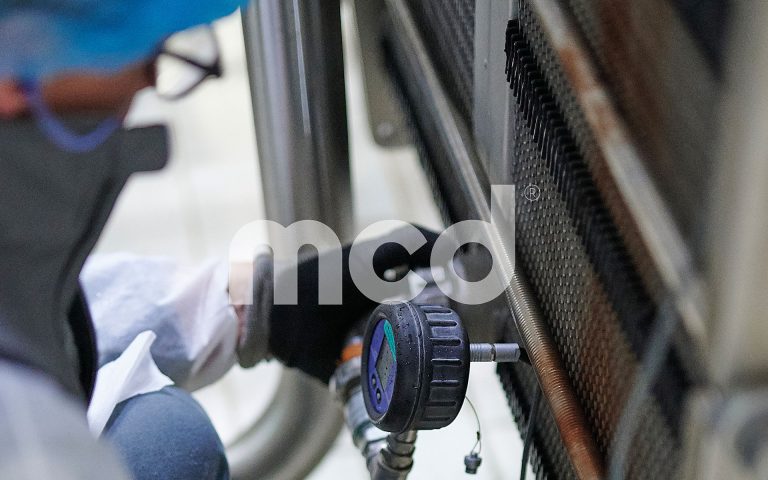Read this article to find out why you need to maintain your heat exchanger.
By visiting our site, you agree to our privacy policy regarding cookies, tracking statistics, etc.
Our teams of technicians, experts in the maintenance of plate heat exchangers and equipped to handle all types and makes of heat exchanger, will work on your company’s site throughout France, as well as in Belgium, Luxembourg and Switzerland.
In an emergency, our teams are ready to intervene at any time, 12 months a year, 7 days a week, 24 hours a day, to repair your plate heat exchangers, pasteurisers, sterilisers, refrigerators, heaters, evaporators, condensers and domestic hot water (DHW) exchangers.

YEARS OF EXPERTISE

CUSTOMERS IN 90 COUNTRIES

SEALS MANUFACTURED EACH YEAR

COMMITTED EMPLOYEES

MCD replaces defective plates on your plate heat exchanger and replaces and joins gaskets directly on your production site.
As part of our on-site service, we also offer a cleaning service for your plate heat exchanger.

Does your heat exchanger need to be repaired in our maintenance centre? MCD will dismantle and reassemble your plate heat exchanger and transport it using our service vehicles.

MCD offers a range of integrity tests adapted to your needs and budget. We come to your production site to carry out integrity tests by MCD®.
Read this article to find out why you need to maintain your heat exchanger.
A heat exchanger is an industrial machine that allows an exchange between two flows by ensuring that they never meet. The exchange of these two flows allows heat to be transferred from one flow to the other. Heat exchangers can be found in many industrial applications. These exchangers are often named according to their application, for example: a pasteuriser, a steriliser, an evaporator, an air conditioner, a refrigerant, a domestic hot water (DHW) exchanger, etc.
In this article, we will look at just two types of heat exchanger: shell-and-tube and plate heat exchangers.
Tubular heat exchangers, as the name suggests, are made up of tubes centralised in a shell. An initial fluid flows through this metal section and is used to heat or cool the liquid circulating through the tubes, which are designed to withstand high pressure.
Plate heat exchangers, as the name suggests, are made up of chevron plates. Thanks to these chevrons, the fluids circulate at controlled speeds to achieve the level of heat exchange required for the process.
Whatever the heat exchanger’s area of application, it must be maintained frequently to avoid any risk of contamination or clogging that could reduce its performance. Heat exchangers are one of the key components in any industrial process. They come in a variety of sizes, from the smallest to the largest, and in different materials (stainless steel, steel, titanium, etc.). They are often used in processes that require heating or cooling.
The heat exchanger is a key element of the business. By injecting specific temperatures and pressures, it cools or heats your products. Unfortunately, the build-up of mineral and organic deposits can reduce its efficiency. If the exchanger is not checked regularly, this can lead to a loss of power, uncontrolled shutdowns and fluid mixing (exchanger without integrity).
Regular maintenance of your exchanger will save a lot of time, money and other resources. The life of a heat exchanger is directly linked to the constraints of the application and the regularity of maintenance.
Regular cleaning will extend the life of the heat exchanger, and reduce the sometimes high cost of repair or replacement. Factors such as salt water or corrosive liquid, pressure drop or corrosion due to sediment build-up can all affect the performance of your exchanger and cause premature wear of your equipment.
There are three ways to maintain your heat exchanger: predictive maintenance, preventive maintenance or corrective maintenance.
Predictive maintenance is maintenance based on measuring tools connected to the heat exchangers. This may consist of an integrity test to check that the plates and seals are in good working order. This test can then give an indication of the need for maintenance by changing the gaskets or plates, or the presence of a leak, or whether the exchanger can still be used in its current state without full and immediate maintenance.
Preventive maintenance is maintenance that is carried out even before there is a problem with an exchanger. The main aim is to draw up a maintenance plan and avoid production stoppages. It checks that each piece of equipment is working properly and that the industrial equipment is operational. This maintenance is generally planned in accordance with the regulations and the manufacturer’s recommendations, but remains directly dependent on the exchanger’s application constraints.
This preventive maintenance includes conditional and systematic preventive maintenance. Conditional preventive maintenance is carried out by regularly checking the machine by monitoring the exchanger’s operating indicators (pressure, flow, leaks, etc.). Technicians intervene when an indicator starts to change.
Systematic maintenance is regular, periodic maintenance. For example, every 6 months a technician will replace seals or carry out high-pressure cleaning to ensure that the operation of the exchanger is not affected.
Remedial maintenance is the last type of maintenance possible. This maintenance will temporarily or permanently repair the heat exchanger. The main objective is to restart the exchanger, which is often at a standstill at this precise moment, blocking an entire process in the plant. Generally, when you have to carry out corrective maintenance, it means that you have damaged seals or that your plates are pierced or too dirty. This often leads to pressure problems, leaks and a high risk of mixed flows (and therefore costly production stoppages).
When it comes to the frequency of cleaning your exchanger, there are no rules, as each exchanger has its own operating characteristics. These directly determine the frequency of cleaning or maintenance required. There are several types of cleaning possible, depending on the exchanger and the process: thermal cleaning, mechanical cleaning (e.g. high-pressure cleaning), and chemical cleaning (cleaning in place or by immersion).
However, it is advisable to carry out a leak test every year to ensure that there are no problems with the integrity of the exchanger, i.e. internal or external leaks.If you’re in any doubt about when your exchanger was cleaned, you can always carry out a full audit and integrity test to determine the general condition of your heat exchanger.
MCD is a maintenance company specialising in plate heat exchangers. Also a manufacturer of elastomer seals since 1969, we are often involved in corrective maintenance. Our technical expertise recommends preventive or even predictive maintenance rather than corrective maintenance.
As stated above, preventive and predictive maintenance will save you time, money and other resources essential to the smooth running of your plant. Whether it’s a plate or tube heat exchanger, the need for maintenance is crucial to its operation.
If you would like any further information, please don’t hesitate to contact us!
intervention days
plates dismantled and reassembled on the customer’s site
plates cleaned on site
plates joined on customer site
km travelled
Choosing MCD for your on-site maintenance work is your guarantee of meeting experienced and highly qualified teams.
Our team of technicians is :
We offer the flexibility of a 24/7 response, assistance as quickly as possible, and transport of your plates to and from our maintenance centre managed by our in-house fleet of vehicles.
A toll-free number is available if you need assistance with your plate heat exchangers or to contact us outside office hours. Toll-free number: 0 800 884 000 (free call and service)